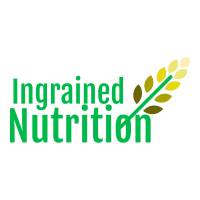Gestational diabetes is a type of diabetes that occurs during pregnancy due to changes in hormone levels, leading to the glucose levels in the blood being too high. Insulin is the hormone in the body produced by the pancreas in response to glucose in the blood (from foods containing carbohydrate), it is the role of the insulin to take the glucose from your blood and move it into the cells in the body where it is used for energy.
In pregnancy, the placenta produces hormones that help the baby to grow and develop. These hormones also block the action of the mother’s insulin, called insulin resistance. Because of this insulin resistance, the need for insulin in pregnancy is 2 or 3 times higher than normal. When the body is unable to produce this much insulin, gestational diabetes develops. When the pregnancy is over and the insulin needs return to normal, the diabetes usually disappears.
Gestational diabetes can be well managed through healthy diet modifications, sometimes with the assistance of medication.
Who is at an increased risk of developing gestational diabetes?
- Women over the age of 30
- Women with a family history of Type 2 Diabetes
- Women who have has gestational diabetes in previous pregnancies
- Women who are overweight or obese
- Indigenous Australians and Torres Straight Islanders
- Certain ethnic groups: Indian, Vietnamese, Chinese, Middle Eastern, Polynesian
How Does Gestational Diabetes Affect My Baby?
As glucose crosses the placenta, the baby is exposed to the mother’s high glucose level. This high level of glucose in the baby’s blood stimulates the baby’s pancreas to produce extra insulin. The extra insulin causes the baby to grow bigger and fatter. The result of this may be a large baby that may need to be delivered early but may not be mature enough. Another problem is that once the baby is born and no longer exposed to high glucose levels from the mother, low blood glucose may result shortly after birth as the baby’s system is immature and unable to adapt to this change. When gestational diabetes is well controlled, these risks are greatly reduced.
Do I Need to Cut Out All Carbs?
No! Focus on wholegrain and low Glycaemic index options, think rolled oats, wholegrain bread, sweet potato, fruit, low sugar dairy products and lentils and beans.
A Dietitian will provide individual nutrition advice but generally aiming for 2-3 serves of carbohydrate per main meals and 1-2 serves of carbohydrate for snacks, aiming for 2-3 snacks per day.
What about Fats & Protein?
Healthy fats & lean protein can aid in satiety and have a stabilising effect on blood glucose levels after eating. Including healthy sources of fats such as avocado, nuts and seeds along with lean sources of protein with main meals such as salmon, chicken, lentils and beans and lean red meat is recommended for this reason.
Sample Meal Plan
Breakfast
1/3 cup rolled oats made on milk with added berries and a cup of tea
Morning Tea
Small banana + 5 almonds
Lunch
Bowl of vegetables and lentil soup with 1 slice of wholegrain bread
Afternoon Tea
4 wholegrain crackers with 1/4 smashed avocado and tomato
Dinner
150g grilled salmon, 1/3 sweet potato with a garden salad
Supper
100g Greek yoghurt + 1 kiwi fruit cut-up




